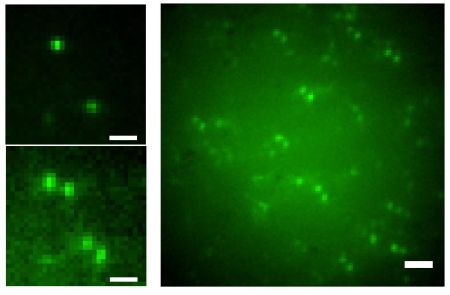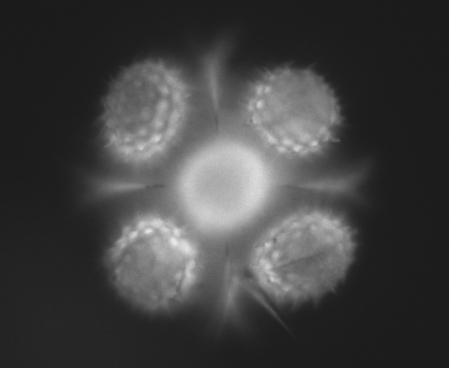Professor Dr. Rudolf Jaenisch is the winner of the Carl Zeiss Lecture award 2009, the highest scientific commendation granted by the German Association for Cell Biology (DGZ). Jaenisch is a professor at the Massachusetts Institute of Technology (MIT) and a founding member of the Whitehead Institute for Biomedical Research (Cambridge, USA). The award has been conferred annually in recognition of outstanding achievements since 1990. It is linked to a scientific guest lecture which is given by the winner during the annual meeting of the DGZ. Jaenisch is increasingly devoting his attention to therapeutic cloning in animal models and to stem cell research. In 2002 he was the first geneticist to prove that a genetic defect in mice can be cured by therapeutic cloning.
www.zeiss.de/en
Carl Zeiss Lecture Award to Rudolf Jaenisch
März 30, 2009International Optoelectronics Expo
März 27, 2009From Sep. 6-9, 2009 the 11th China International Optoelectronics Expo (CIOE) will take place in the Shenzhen Convention & Exhibition Center in Shenzhen, China. It address to representatives working in the fields of optoelectronics manufacturing, automotive and aerospace, microelectronics manufacturing, semiconductors, mechanical engineering and processing, biotechnology, pharmaceutical technology as well as in research, science and government institutions. The 2009 CIOE will present the three sub-expositions on 70,000 m²:
– Optical communications, sensors, lasers and infrared applications expo
– Precision optics expo
– LED expo
Workshop on Single Molecule Spectroscopy
März 26, 2009
For the 15th time now, PicoQuant is hosting the International Workshop on Single Molecule Spectroscopy and Ultrasensitive Analysis in the Life Sciences. The workshop will take place from Sep. 15-18, 2009 in Berlin-Adlershof, WISTA campus, Germany. Topics that will be covered during the talks and a poster session are: Fluorescence Lifetime Correlation Spectroscopy (FLCS), Pulsed Interleaved Excitation (PIE) and Stimulated Emission Depletion Spectroscopy (STED), two-photon excitation, new and robust fluorophores such as quantum dots, metalfluorophore interactions, analysis of living cells, investigation of protein folding and biological function studies of macromolecules and Foerster Resonance Energy Transfer (FRET).
www.picoquant.com/_workshop.htm
European Biophysics Congress
März 24, 2009The 7th European Biophysics Congress will take place in Genoa, Italy from July 11-15, 2009. The congress is organized on behalf of the Italian Society of Pure and Applied Biophysics (SIBPA) and the European Biophysics Societies Association (EBSA). It address to representatives from academic and industrial institutions.
Conference topics include:
1. Single molecule biophysics
2. Lipid biophysics
3. Folding/unfolding of proteins
4. Multiscale simulation
5. Chromatin, nucleosomes and molecular machines
6. Glycobiophysics
7. Biomolecular self-assembly
8. Photosensory biophysics
9. Structure-function relationships (channels, pumps, exchangers)
10. Live cell imaging
11. Protein-ligand interactions
12. Membrane microdomains and signalling
13. Biological motility and molecular motors
14. Interaction and recognition of DNA
15. Biomaterials and drug delivery
16. Single molecule fluorescence
17. Imaging and spectroscopy
18. Fluorescent proteins
19. Solar energy conversion and photosynthesis
20. Statistical, soft matter and biological physics
21. Condensed colloidal phase in biology
22. Ion channels in channelopathies and cancer
23. RNA world
24. Stem cells

3D Single Molecule Imaging
März 20, 2009
A team of researchers led by professor Rafael Piestun of the department of electrical and computer engineering at the University of Colorado and William E. Moerner, professor of chemistry at Stanford University, have demonstrated for the first time a method for three-dimensional optical imaging of objects smaller than 20 nanometers over a wide spatial range. Optical imaging at these scales is of great interest in biomedical sciences and nanotechnology. The new findings, which provide a powerful tool for the super resolution of single molecules, have implications for characterizing defects in materials, the characterization of nanostructures, and the three-dimensional, biophysical and biomedical imaging of tagged molecules inside and outside of cells.
www.stanford.edu
www.colorado.edu

3D single molecule imaging
Emerging Company of the Year Award
März 17, 2009Seno Medical Instruments, a company engaged in the development of a opto-acoustic cancer platform technology, announced it has received the 2009 North American Medical Imaging Emerging Company of the Year Award from Frost & Sullivan. The Award recognizes Seno Medical Instruments pioneering and pre-clinical opto-acoustic imaging technology, its first product that was commercialized. Seno’s management team will be receiving this award March, 18 in San Francisco.
www.senomedical.com
Partial Wave Spectroscopic Microscopy
März 16, 2009A team of researchers led by Vadim Backman, professor of biomedical engineering of the Northwestern University, has developed a way to examine cell biopsies and detect never before seen signs of early-stage pancreatic cancer, according to a new paper published online by the OSA journal Optics Letters. The new technique, called „partial wave spectroscopic microscopy“ detects fluctuations in the cells‘ refractive index (an optical property that measure how cells bend light passing through them). These fluctuations are influenced by nanoscopic changes to the cells‘ interior architecture that often occur much earlier than the changes pathologists can detect under their microscopes. The more architectural disorder there is inside the cell, the more the refractive index fluctuates. The researchers showed that by quantifying these fluctuations, partial wave microscopy could identify cancer cells even in cases where they had not been detected by pathologists. Now, the partial wave spectroscopic microscopy has to prove effective in double-blind clinical trails.
www.northwestern.edu
Strengthening the Research and Education Network
März 13, 2009Microscope designer Leica Microsystems and the European Molecular Biology Laboratory (EMBL) have signed a corporate partnership agreement whereby Leica Microsystems becomes a founder partner of the EMBL Advanced Training Centre scheduled to be completed in September 2009. Besides its financial involvement, the company will provide EMBL with Leica systems and will support events for the international scientific community. In return, Leica will be granted access to the first-class facilities of the molecular biology research institute to run product and application training courses.
www.embl-heidelberg.de
www.leica-microsystems.com
The Smallest Periscope
März 11, 2009A team of Vanderbilt scientists have invented the world’s smallest version of the periscope and are using it to look at cells and other microorganisms from several sides at once. The researchers have dubbed their devices „mirrored pyramidal wells.“ They consist of pyramidal-shaped cavities molded into silicon whose interior surfaces are coated with a reflective layer of gold or platinum. They are in dimension about the width of a human hair and can be made in a range of sizes to view different-sized objects. When a cell is placed in such a well and viewed with a regular optical microscope, the researcher can see not only the top of the cell, but several sides simultaneously. „This is something biologists almost never see,“ says team member Chris Janetopoulos, assistant professor of biological sciences.
The Vanderbilt group is not the first to make microscopic pyramidal wells, but it is the first to apply them to make 3D images of microorganisms. In 2006, a group of scientists in England created pyramidal micromirrors and applied them to trapping atoms. And last spring researchers at the National Institute of Standards and Technology used similar structures to track nanoparticles.
www.vanderbilt.edu

Sunflower pollen, taken by Kevin Seale, Vanderbilt Institute for Integrative Biosystems Research and Education
Seminar on Raman Spectroscopy
März 9, 2009Thermo Fisher Scientific will host a free of charge informative seminar on the increasingly popular and implemented Raman spectroscopic technique. The seminar will be held on April 23, 2009 in Hemel Hempstead, UK. It is aimed at scientists looking to expand their analysis capabilities in either routine or research laboratories. Attendees will have the opportunity to see Raman systems in operation and the opportunity to ask questions about specific applications. For registration please visit:
www.thermo.com/ukscievents



 Veröffentlicht von aszerdi
Veröffentlicht von aszerdi